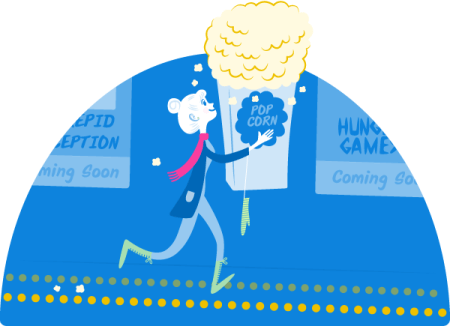If you want more of your clients to hire you for your higher level, premium service offerings, I suggest using a powerful pricing tactic called the Decoy Effect. Let me show you how it works by walking you through how a client of mine used it.

When I first met Dustin, a copywriter, he offered two different levels of service—a basic copywriting service and a premium service that included copywriting as well as consulting. He had hoped that most people would choose his premium service. It was better for them, because they got more effective copy if Dustin consulted on their overall content strategy. It was also better for Dustin, because it meant more revenue. Unfortunately few people ever chose his premium service.
I had seen something called the Decoy Effect work wonders for other small business owners, so that’s what I suggested Dustin use.
Here’s how it works.
The power of comparison
Our brains are wired to constantly make comparisons. When confronted with two or more choices we can’t help but compare them to each other. This tendency is the core of the Decoy Effect.
Our instinct to constantly compare choices is often used in product pricing to nudge customers to upsize their purchases. For instance, research has shown that if a vendor is selling two sizes of a product, let’s say soft drinks for example—a small for two dollars and a large for three dollars—the small will likely be the most popular choice. But when a third option is introduced—a medium for $2.75, say—most people will choose the large.
That’s because the difference in size between the medium and large seems much bigger than the difference in price, and so customers see more value in the large. They perceive they’re getting more for their money—making it a better deal. In effect, the new option becomes a decoy, drawing people to choose the large.
Dustin was in the same boat as the soft drink vendor who offers only two options—there’s nothing to draw the customer toward the larger offering.
The Decoy Effect in action
To put the Decoy Effect into practice Dustin needed to introduce a new offering that would make his consulting option a clear winner by comparison. Following the example of the soft drink vendor wouldn’t quite work for Dustin, because the issue wasn’t size of service—it was type of service. So there really wasn’t a viable option to offer a new “medium” service that would encourage people to choose the “large” consulting option.
So, what Dustin did was offer a new premium service, which included copywriting and consulting, plus file formatting and conversion. Most clients weren’t in the market for the extra file services, so few chose this new option. But more clients than ever began choosing the original consulting option. Essentially, the new premium offering became the decoy encouraging people to see more value in the offerings that included consulting than in just the basic copywriting service.
If you want to apply the Decoy Effect for your own business, it’s important to keep in mind that every business is different. There are no hard and fast rules. In fact, there’s just as much art as there is science to pricing, so you may have to experiment with various pricing and service options to find out what works best to encourage your clients to choose your higher value services.
The final word
The Decoy Effect is an effective way to use the power of contrast to help clients make good choices. It helps shift their focus from price to value—and ultimately makes them more open to working with you at a higher level. By appealing to the human instinct to compare, you help clients make the right decision—one that can pay off for both of you.
Editor’s note: This story originally appeared here.




